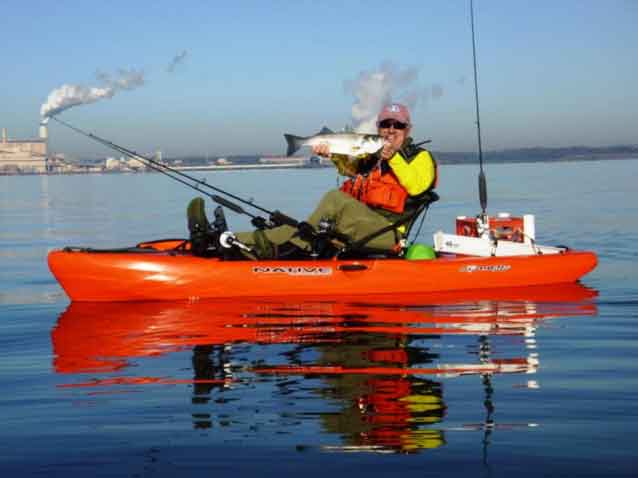One of the first accessories I add when I get a new kayak for fishing is rod holders. When I first got into kayak fishing, I began using Scotty products. There are other good brands, but I always stuck with Scotty bases, rod holders, and related parts so I use that brand as examples below — but note that you have many quality options to choose from.

Most rod holder systems have at least two components: the rod holder, and a base onto which the holder is inserted. Before starting on the project, you should evaluate how your kayak is laid out.
- Are there built-in gear tracks that accept a rod holder base?
- Are there built-in flush mount rod holders already there?
- Are there flat spots on the top surface of the hull where you could place a rod holder base or track system?
You should also think about the following (but remember, there is no right or wrong answer — these are matters of personal preference).
- How many rod holders would you like to have?
- How will you use them (storing extra rods, trolling, rod rests, etc.)?
- Where on the kayak do you want them placed?
Kayak Gear Tracks
If your kayak already has gear tracks, you can find bases that slide into the tracks and tighten down. In the Scotty line, the product I use is called a gear head track adapter. Adding it to a track is quick and easy, doesn’t require drilling any holes, and the base can be moved around in seconds. For storing rods, this type of base works fine. However, if you plan to troll with rod holders in a gear track base, you should be aware that while force applied to the rod holders on the starboard side of the kayak will tighten the base, force applied to those on the port side will loosen the base. Yes, a large fish can apply enough force to loosen a track-mounted rodholder base — I lost several fish that way and once lost a rod and reel overboard.
An alternate mounting method I used on my Native Slayer Propel 13 solves the problem. Use the standard Scotty bolt-on base, but attach it to the gear track using two track slugs instead of the tightening base. That type of installation is very solid, and eliminates the loosening issue described above.
Surface Mount Rodholders
If your kayak doesn’t have gear tracks, the tracks are not in a position where rod holders would be functional, and you don’t have a good way or place to attach tracks, you can attach the bases directly to the top of the kayak. It’s important to use stainless steel hardware and whenever possible, bases should be attached with bolts and nuts rather than screws (which may come loose over time). To use nuts, however, you need to have access to the underside of the location so you can get a wrench under there.
If your kayak doesn’t have an access hatch to allow you to use bolts and nuts, rivets or well nuts are another option. I used well nuts on an installation behind the seat on my Manta Ray 11; these small rubber grommets have a flange on one end and brass threads inside. A hole is drilled in the hull, the well nut is set in place, and the accessory is screwed into the well nut. As the bolt is tightened, the rubber scrunches up into a “doughnut” on the underside of the hull.
Before drilling any holes to attach a base, I strongly recommend that you sit it the seat and reach fore and aft to make sure you can grab a rod from the location. You want to make sure it’s close enough to remove a rod from the holder quickly, but not so close that the rod butts bump into the seat frame or interferes with your paddle stroke.
Flush Mount Rodholders
Some kayaks come with flush-mount rod holders already installed or molded into the hull. My Native Slayer Propel 10 pedal kayak came with a flush-mount holder to the right of the seat and while it was not suitable for trolling, I found it to be quite useful when I was trolling from other rod holders and needed a place to put my rod while unhooking a fish or changing a lure. Flush mount holders can be added by the user, but require drilling a large-diameter hole in the hull. Before doing so, always measure to be sure there’s room for the entire holder below the surface.
Quick & Easy Rodholders
Many kayak anglers simply add a crate, tackle bag, or some other device behind the seat for storing gear. Many of these storage containers have rod holder tubes built in or attached to the outside, which are fine for storing rods but aren’t the best for trolling.
One final thought: if you decide to drill holes, proper planning and care should be used to ensure that rod holder placement will allow easy access to the rods without having to turn around — or lean too far out to the side, which can have some problematic consequences for a kayak angler.
-By John Veil